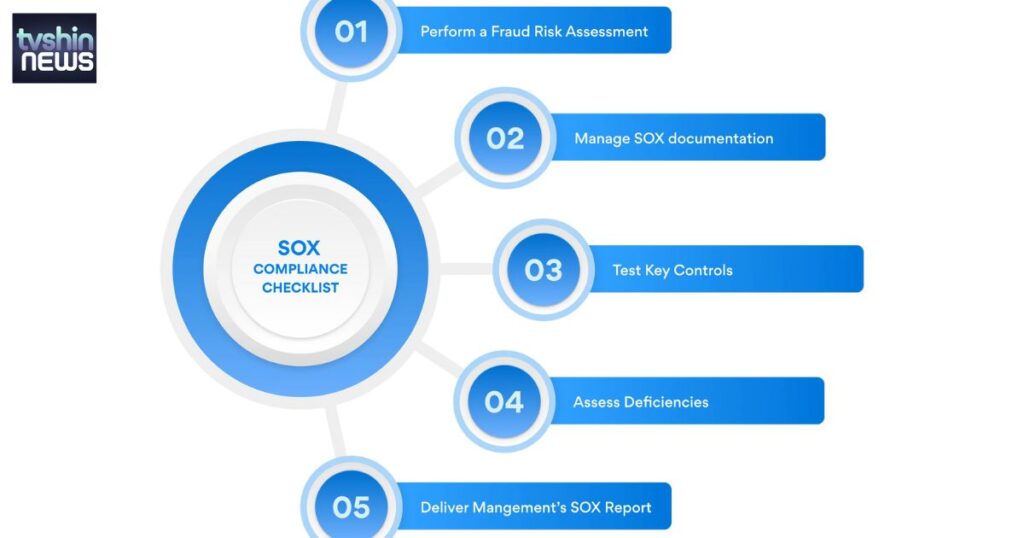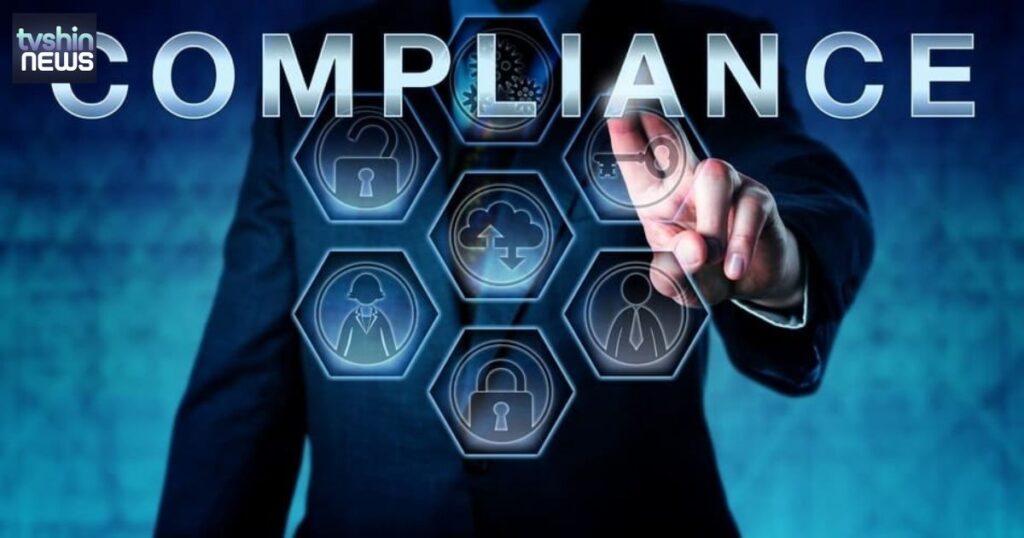In today’s digital age, compliance with regulatory frameworks like the SOX (Sarbanes-Oxley Act) compliance is more critical than ever, particularly for technology firms and organizations dealing with complex IT infrastructures.
The role of the IT SOX Manager has become a linchpin in ensuring organizations meet these rigorous standards. This article will explore the IT SOX Manager role, focusing on the importance of ACPUUSR023325external identifiers, the qualifications needed for this position, the responsibilities tied to SOX controls for IT departments, and much more.
IT SOX Manager – ACPUUSR023325External Activision
The IT SOX Manager is essential in ensuring that IT systems security and compliance align with the stringent requirements of the Sarbanes-Oxley Act (SOX). This role has become more complex and nuanced, particularly as IT departments grow in scope and sophistication.
One unique element within the world of SOX compliance is the inclusion of specific identifiers like ACPUUSR023325External, which can refer to an internal compliance marker used to track and manage regulatory alignment.
ACPUUSR023325External Activision may be an identifier used by Activision or similar tech firms to streamline their compliance processes across IT departments.
The Importance of SOX Compliance in the Digital Age
What is SOX (Sarbanes-Oxley Act) Compliance?
The Sarbanes-Oxley Act was established in 2002 after significant corporate accounting scandals, most notably at companies like Enron and WorldCom.
SOX aims to protect investors by enhancing the accuracy and reliability of corporate disclosures. For IT SOX managers, this means ensuring that all internal controls in IT systems are compliant and robust enough to prevent fraud and data manipulation.
SOX regulations in IT specifically require that financial data be accurately captured, processed, and reported through IT systems and controls. Companies must maintain records of these processes, undergo audits, and ensure robust IT governance frameworks are in place.
SOX Compliance in the Digital World
As businesses evolve and more companies undergo digital transformation, the role of IT SOX compliance has expanded to cover complex IT systems, including cloud infrastructure, AI integrations, and cybersecurity protocols.
The increasing complexity of IT risk assessments and the evolving IT risk management landscape make it essential for companies to maintain tight compliance with SOX standards.
IT managers must ensure their IT system’s security and compliance procedures are current and aligned with the latest regulations. The consequences of not complying with SOX can be severe, including significant fines, reputational damage, and legal penalties.
Recognizing the Function of an IT SOX Manager
What Does an IT SOX Manager Do?
An IT SOX Manager oversees the SOX audit procedures, ensures that IT systems comply with all relevant SOX regulations in IT, and manages IT internal controls. The position is especially critical in technology firms where IT systems are the backbone of operations.
Key responsibilities include:
- Managing the IT governance and SOX compliance processes.
- Working with external auditors for external auditor collaboration during audits.
- Leading IT auditing and compliance to ensure alignment with SOX audit procedures.
- Conducting IT risk assessments to identify and mitigate potential security and compliance issues.
The IT SOX Manager’s Role in IT Governance
In addition to compliance management, the SOX management role involves coordinating and ensuring that all internal controls in IT systems are operational. This includes managing IT governance frameworks, which define the structures and policies necessary to maintain compliance with SOX regulations.
Decoding the Significance of ACPUUSR023325External

What is ACPUUSR023325External?
The term ACPUUSR023325External is likely an identifier or code used by specific organizations—possibly including Activision, based on the reference—to track specific compliance activities related to SOX. This identifier could be crucial for managing the extensive IT processes involved in SOX compliance.
For example, ACPUUSR023325external could refer to specific audits or records that help IT managers track which systems and processes have undergone compliance checks and are aligned with SOX.
Its purpose is to streamline internal auditing processes, assisting internal and external auditors to ensure that companies meet regulatory compliance requirements.
Why Does ACPUUSR023325External Matter?
For IT SOX managers, understanding and using such identifiers are essential for maintaining transparency and ensuring compliance activities are tracked effectively. In an age where digital audits and records play a crucial role, keeping a detailed and precise audit trail using such identifiers is necessary to prove compliance and mitigate risks.
Key Responsibilities of an IT SOX Manager
The role of an IT SOX Manager spans multiple responsibilities, each critical for the smooth operation of a company’s IT and compliance departments. Below, we will break down the core responsibilities of this role.
Compliance Management
The IT SOX Manager is at the helm of ensuring SOX compliance across IT departments. This responsibility includes overseeing IT departments’ development, implementation, and regular updating of SOX controls.
A well-structured compliance program must address IT and financial processes to guarantee no weak points in the control framework.
Evaluation of Risk
An essential part of the IT risk management process is evaluating the risks associated with IT systems. An IT SOX Manager assesses internal and external risks that could affect the integrity of financial reporting.
This includes understanding how IT internal controls intersect with financial operations to identify potential vulnerabilities.
Coordination of Audits
The IT SOX Manager coordinates SOX audits, working closely with internal audit teams as well as external auditors. Regular audits are essential for determining whether the company complies with SOX regulations in IT and whether there are areas of improvement in IT risk assessments and internal controls in IT systems.
Awareness and Training
To ensure that all employees understand their responsibilities regarding SOX compliance, the IT SOX Manager must conduct ongoing training and awareness programs.
These sessions ensure that staff at all levels know the importance of IT auditing and compliance and how they can contribute to maintaining strong internal controls.
Record Keeping and Reporting
Maintaining accurate documentation is another critical aspect of the IT SOX Manager role. This includes preparing reports on IT compliance certification programs and ensuring all compliance activities are well-documented for future audits. Proper record-keeping is necessary to ensure the organization is always ready for SOX audits.
Skills and Qualifications for an IT SOX Manager
To excel in the role of IT SOX Manager, individuals must possess a mix of technical expertise, compliance knowledge, and communication skills.
In-depth Knowledge of SOX Regulations
A deep understanding of SOX regulations in IT is a fundamental requirement. This includes knowledge of the law’s technical and financial aspects and how it applies specifically to IT systems. Familiarity with SOX controls for IT departments is essential for ensuring compliance.
IT and Security Expertise
IT systems security and compliance are critical in the IT SOX Manager role. A strong background in IT security is necessary to assess vulnerabilities, implement security measures, and ensure that the company’s IT infrastructure is safe from threats that could compromise compliance.
Excellent Analytical Capabilities
The ability to analyze complex data and systems is essential. IT SOX Managers need to assess the risks and vulnerabilities within IT systems, provide insights, and propose solutions to mitigate those risks.
Proficiency in Communication
Clear and concise communication skills are crucial. IT SOX Managers must be able to explain complex compliance issues to senior management, auditors, and other stakeholders. They must also ensure that the broader IT team understands the significance of their roles in SOX compliance.
Observation of Detail
Attention to detail is critical for identifying gaps in compliance. The IT SOX Manager needs to meticulously track and monitor systems to ensure all IT infrastructure regarding SOX audit procedures is present.
IT SOX Managers’ Best Practices for Ensuring SOX Compliance

Keep Abreast of Any Changes to Regulations
SOX compliance is not a one-time effort—it requires continuous monitoring. IT SOX Managers must stay updated on changes to regulations and best practices to ensure that compliance efforts remain relevant and practical.
Utilize Advanced Technology Solutions
Technology can help streamline IT risk management and compliance efforts. Implementing tools like automation and AI allows IT SOX Managers to make audits more efficient and identify issues before they become significant risks.
Conduct Internal Audits regularly.
Regular internal audits are necessary to maintain IT internal controls. These audits help detect potential compliance gaps early, making fixing problems easier before they escalate.
Encourage Departmental Cooperation
Collaboration across departments—such as IT, legal, finance, and auditing—is vital. The IT SOX Manager should foster cooperation to ensure everyone is aligned with SOX procedures and processes and working towards the same compliance goals.
Prioritize Training and Education
Regular training ensures that all employees, from IT staff to auditors, know their SOX compliance responsibilities. IT SOX certification requirements must be communicated to the team to ensure everyone is on the same page.
The Role of IT SOX Managers in Risk Management
IT risk management is a cornerstone of the IT SOX Manager’s responsibilities. This role goes beyond ensuring that systems comply with regulations; it also requires a proactive approach to identifying and managing risks that could impact the company’s IT systems and financial data.
IT SOX Managers must implement a thorough process of risk assessments to determine where vulnerabilities exist within the company’s infrastructure. These assessments help pinpoint areas where security breaches could occur or where internal controls might fail.
Once identified, the IT SOX Manager works with relevant departments to mitigate these risks, ensuring that the company remains compliant with SOX regulations in IT and avoids potential regulatory violations.
Effective risk management also involves continuous monitoring of IT systems and reviewing procedures regularly to stay ahead of emerging threats.
Collaboration Between IT SOX Managers and External Auditors
The role of the IT SOX Manager is highly collaborative, especially when it comes to working with external auditors. External auditors provide an unbiased third-party evaluation of the company’s compliance with SOX regulations.
The IT SOX Manager’s job is to ensure auditors have access to all necessary documentation, data, and system configurations to evaluate company compliance.
This collaborative effort often involves preparing and presenting detailed reports on SOX controls for IT departments, highlighting internal controls, risk assessments, and audit trails.
Effective communication and preparation for these audits are essential for ensuring smooth, successful evaluations and identifying areas where improvements are needed to enhance overall compliance.
Navigating the Challenges of IT SOX Compliance

One of the biggest challenges IT SOX Managers face is maintaining compliance amidst the rapid pace of technological advancements. With the integration of cloud systems, Artificial Intelligence, and big data analytics, companies need help to keep their IT systems compliant with SOX regulations.
New technologies introduce complexities regarding data security, accessibility, and control management, which can create additional compliance hurdles. For instance, IT risk assessments may evolve to address issues related to the scalability of cloud systems or the security of decentralized data sources.
IT SOX Managers must continuously adapt to these technological changes, ensuring compliance processes evolve to meet new regulatory and security challenges.
How IT SOX Managers Support IT Governance
A robust IT governance framework is essential for maintaining compliance with SOX regulations and ensuring the company’s IT infrastructure operates smoothly and securely.
The IT SOX Manager plays a pivotal role in shaping and enforcing IT governance policies. These policies define how IT resources are managed, ensuring that all systems align with regulatory requirements and business objectives.
IT governance covers everything from risk management to data privacy, and the IT SOX Manager ensures these areas are monitored effectively.
By helping to set clear roles, responsibilities, and accountability within IT departments, the IT SOX Manager ensures that SOX compliance is embedded in everyday practices, making it part of the organizational culture.
The Evolving Landscape of IT SOX Regulations
As regulations evolve, IT SOX Managers must stay current on the latest SOX procedures and process changes.
The regulatory environment for IT is constantly shifting due to technological changes, security threats, and global compliance standards. For example, new cybersecurity legislation could affect how organizations handle sensitive data, impacting SOX compliance.
Additionally, as companies expand internationally, they must ensure they comply with the U.S. SOX regulations and global standards.
Staying on top of these changes requires continuous education and involvement in industry forums, professional networks, and certification programs. By remaining adaptable, IT SOX Managers help organizations navigate these regulatory shifts effectively, maintaining compliance and reducing the risk of legal consequences.
.
Future Trends in IT SOX Management

A Greater Priority for Cybersecurity
With the increase in cyber threats, IT security management and SOX compliance are more intertwined than ever. IT SOX Managers must adapt their strategies to address evolving cybersecurity risks and meet regulatory requirements.
Integration between AI and Automatic Learning
Artificial Intelligence will play a significant role in streamlining IT audit procedures and improving the accuracy of SOX compliance. AI-powered tools can detect real-time anomalies, helping reduce the manual workload.
Adapting to a Changing Regulatory Environment
As regulations evolve, IT SOX Managers must remain flexible and adaptable. This includes staying ahead of changes in compliance regulations and understanding how new IT technologies affect compliance efforts.
Facts
- Fines for Non-Compliance: Companies that fail to comply with SOX regulations can face significant penalties. The U.S. Securities and Exchange Commission (SEC) can impose fines of up to $5 million for organizations that don’t meet SOX requirements.
- Audit Frequency: IT SOX audits should be conducted at least annually, but some companies may opt for more frequent reviews to stay ahead of potential risks.
- SOX Compliance Cost: The cost of SOX compliance can be significant, often ranging from $2 million to $5 million annually for large companies.
Conclusion
The role of the IT SOX Manager is multifaceted and indispensable in today’s regulatory landscape. From ensuring compliance with SOX regulations in IT to managing IT risk assessments and coordinating audits, IT SOX Managers are vital for ensuring that organizations remain compliant in an increasingly complex digital world.
By following best practices and leveraging new technologies, they can ensure that their company stays ahead of the curve regarding IT governance and SOX compliance.








